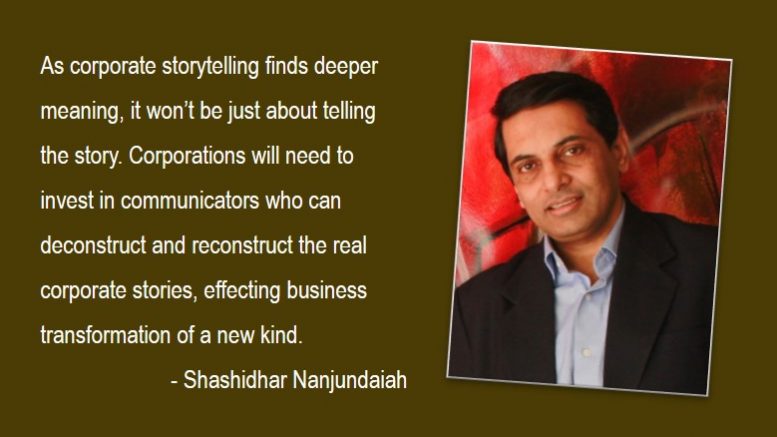As someone who argued vociferously even up until the early 2000s against technological determinism, I now eat a humble pie, convinced that technology is indeed determining much of how we unpack ourselves today in response to new inventions. There is a transformation around us, but also within us. Did we know we are such good storytellers, for example? Are we all turning into storytellers? Yes? Then what’s in it for the field of communication?
Our behaviour has implications on the workplace, and so it is not surprising that the corporate world had been cautious in dealing with the potential implications of social media’s powerful but strategically risky ubiquity. After all, how much can corporations really control personal communication? It is an ethically-charged dilemma.
On the one hand, traditionally, corporations have not used communication to its full potential, employing it as a tool of dissemination and not much more. On the other, “out there” in the real world, communication has been taking over the world by storm, democratising it and redefining its contours. Storytelling, for example, is a traditional art and also the most modern technique. Corporations and organisations in general have been harnessing the newest and perhaps the least expected, but the truest form of mass (because democratised) communication.
Social media, the enabler
Predictably, social media platforms became spaces for promotion, and promotions evolved to new forms, “embedding” themselves into social media with videos that have the homely look and feel. Not only did the boundaries between the presentations of different forms of promotions blur, but organisations, through these new forms of connection, came closer than ever before to our social and personal realities.
But is storytelling only about telling a story—about communicating an idea? Or is there something deeper? All organisations are socially relevant. They all do social service simply by being in the business, but many see inspiring relevance only in the profits, fame, or competitiveness. In traditional thinking, a corporate story is a corporate film about its history and development, and the achievements. But today, a corporate story is embedded in the vision, product, service, and employee.
The much-talked about “Fearless Kota” campaign in 2018 by FCB Ulka on behalf of their nutrition drink client Horlicks—a somewhat early mover in employing storytelling to weave a different story—exemplifies a social problem: Kota, the national hub for standardised examination preparation is also the student suicide capital. The video introduces someone who can help solve the problem—the mother, with some help from Horlicks, no doubt.
Beyond social campaigns
There is a corporate social responsibility (CSR) streak in such campaigns. But their beauty lies in their appeal. They are not mere campaigns—social or corporate. They have already moved to the next-level challenge—how to harness the unique nature of public communication in the age of social media to benefit the company and the larger stakeholder community.
Some corporations are making an effort to mainstream the concept of storytelling and embed it deeper into the system. The first step in that endeavour is to build a story. The spectrum of such stories can be so wide that individuals within organisations can contribute new dimensions.
I will not dwell upon how social media is the matchmaker between Adam Smith and Karl Marx. But suffice it to say, social good, whether transformational or sustaining, is at the heart of a good story. Just as the best stories we read or watch have specific elements—drama, intrigue, and emotiveness—embedded into them, corporate stories embed purpose. Building a good story within an organisation entails building that sense of purpose within itself.
The trouble is, typically, the larger picture is either not known or practised in full within the organisation, or it is told sketchily, pompously, or abstractly. Only a few organisations, let alone employees, see the real story behind the organisation as the most compelling. Corporations that are investing in this new form of communication must thank social media for opening up a new line of thinking that marries the commercial and the social in organic ways. Today’s organisations, smitten by the storytelling bug, are investing in what it takes: They are hiring people who adopt the literary technique in communication—using the elements of characters, plot, experience, reversal, and moral.
Bottom line
But that is still a last-mile adaptation of the previous forms of promotional communication. As stories seep into the DNA of organisations, storytelling will no longer be limited to the margins of the actual business. The larger picture is the inspiring story, because it compels a person to introspect about his or her purpose. In other words, an inspiring corporate story invites an individual to find a life’s purpose that is not defined within the narrow confines of the corporation. Corporations must invest not in storytellers alone—but in communicators who can deconstruct and reconstruct the real corporate stories, effecting business transformation of a new kind.
The views expressed here are that of the author and do not necessarily reflect that of Reputation Today.







Be the first to comment on "Storytelling as Mass Communication"